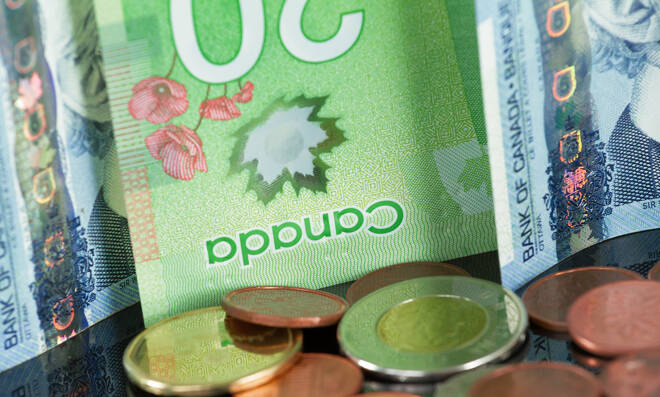Advertisement
Advertisement
USD/CAD: Loonie Hits Over Two-Month High on Strong Jobs Data
By:
The Canadian dollar reached the highest in over two months against its U.S. counterpart on Friday after the economy added a record number of jobs in September, returning back to its pre-COVID-19 pandemic levels and resulting in the lowest unemployment rate in 18 months.
In this article:
The Canadian dollar reached the highest in over two months against its U.S. counterpart on Friday after the economy added a record number of jobs in September, returning back to its pre-COVID-19 pandemic levels and resulting in the lowest unemployment rate in 18 months.
“Today’s report brings total employment back to pre-COVID levels, although the employment rate still sits ~1pp below February 2020. The BoC will also be relieved to see this report as it points towards strong momentum through the second half of 2021,” noted strategists at TD Securities.
“The CAD caught a bid following the employment beat. With energy prices likely to remain elevated and a key BOC meeting later this month, we think the CAD can continue to perform. We hold a stronger conviction on the crosses than against the USD however, as we expect the USD to trade rather sticky in the coming weeks (with the Fed still likely to taper next month). Here, we especially like EURCAD downside following this week’s technical break.”
According to Statistics Canada, the economy added 157,100 new jobs, most of them were full-time and the unemployment rate fell to 6.9%, the lowest level since February 2020. That was way above the consensus estimates of 65,000 new jobs.
Today, the USD/CAD fell to 1.2483, down from Thursday’s close of 1.2546. However, the Canadian dollar lost over 1.2% in August and further depreciated over 0.5% last month.
Canada is the world’s fourth-largest exporter of oil, which edge higher as OPEC+ kept its crude oil output stagnant at the current pace. As part of an agreement announced in July, the OPEC+ group agreed to increase output by 400,000 barrels per day (bpd) every month until at least April 2022.
At the time of writing, U.S. West Texas Intermediate (WTI) crude futures were trading 2.07% higher at $79.92 a barrel. Higher oil prices lead to higher U.S. dollar earnings for Canadian exporters, resulting in an increased value of the loonie.
The dollar index, which measures the value of the dollar against six foreign currencies, was trading 0.13% lower at 94.095. According to the U.S. Labor Department, nonfarm payrolls rose by 194,000 jobs in September, largely missing the consensus estimates of 500,000 jobs. But currency traders bet that the lacklustre U.S. employment numbers will not sway the Federal Reserve from commencing the tapering of asset purchases as early as November.
However, the greenback has gained across most major currencies as investors have become concerned the Fed may withdraw its economic support due to slow global growth and high inflation. Investors were concerned that increasing inflationary pressures could pose a headwind to the economy and affect how soon the Federal Reserve may be able to raise rates. Rising bond yields have contributed to the strengthening of the currency.
It is highly likely that the world’s dominant reserve currency, the USD, will rise by end of the year, largely due to the expectation of at least one rate hike next year. With the dollar strengthening and a possibility that the Federal Reserve will raise interest rates earlier than expected, the USD/CAD pair may experience a rise.
About the Author
Vivek Kumarauthor
Vivek has over five years of experience in working for the financial market as a strategist and economist.
Did you find this article useful?
Latest news and analysis
Advertisement
